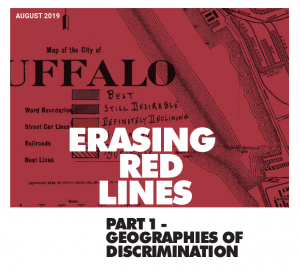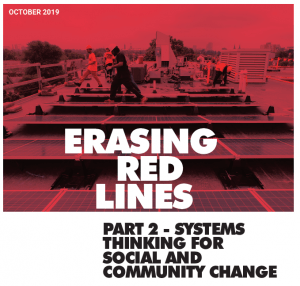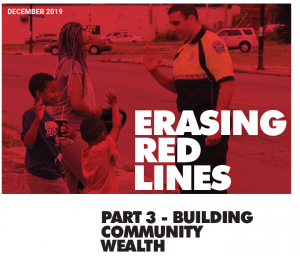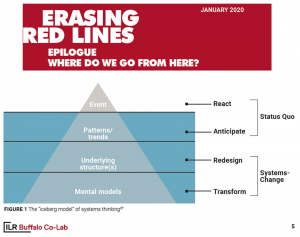Erasing Red Lines
In this special, four-part series of reports, the Cornell ILR Buffalo Co-Lab explores how unjust patterns of neighborhood “distress” and “decline” are products of a flawed and discriminatory political-economic system…and what to do about it.
- Part 1 uses data from Buffalo, NY to show how the same neighborhoods that were “redlined” in the 1930s — meaning that they were identified by powerful political, real estate, and financial actors as spaces unfit for investment — are still the most “disadvantaged” parts of the City today, nearly a century later. The report then asks and offers preliminary answers to questions about how we begin to interrupt the processes that produce and reinforce these and other uneven spatial patterns.
- Part 2 offers a tutorial on systems thinking for social and community change. It then applies the toolkit of systems thinking to the work being done by PUSH Buffalo on the City’s West Side.
- Part 3 introduces the concept of community wealth-building and argues that conventional public policy tends to be crafted in pursuit of private economic profits, as opposed to collective community wealth. It then examines changes that were made to a public sector community development program in Buffalo to create more opportunities for resident and community voice and empowerment. Empirical evidence suggests that these changes might be linked to greater community wealth in at least some neighborhoods. The results hint at several important shifts for transforming public policy into an instrument of community wealth-building (instead of an instrument for private wealth accumulation).
- Part 4, or the Epilogue, synthesizes the key themes and insights from Parts 1 through 3 to engage with the question, “Where do we go from here?”
Click on any of the images below to download the respective report:




